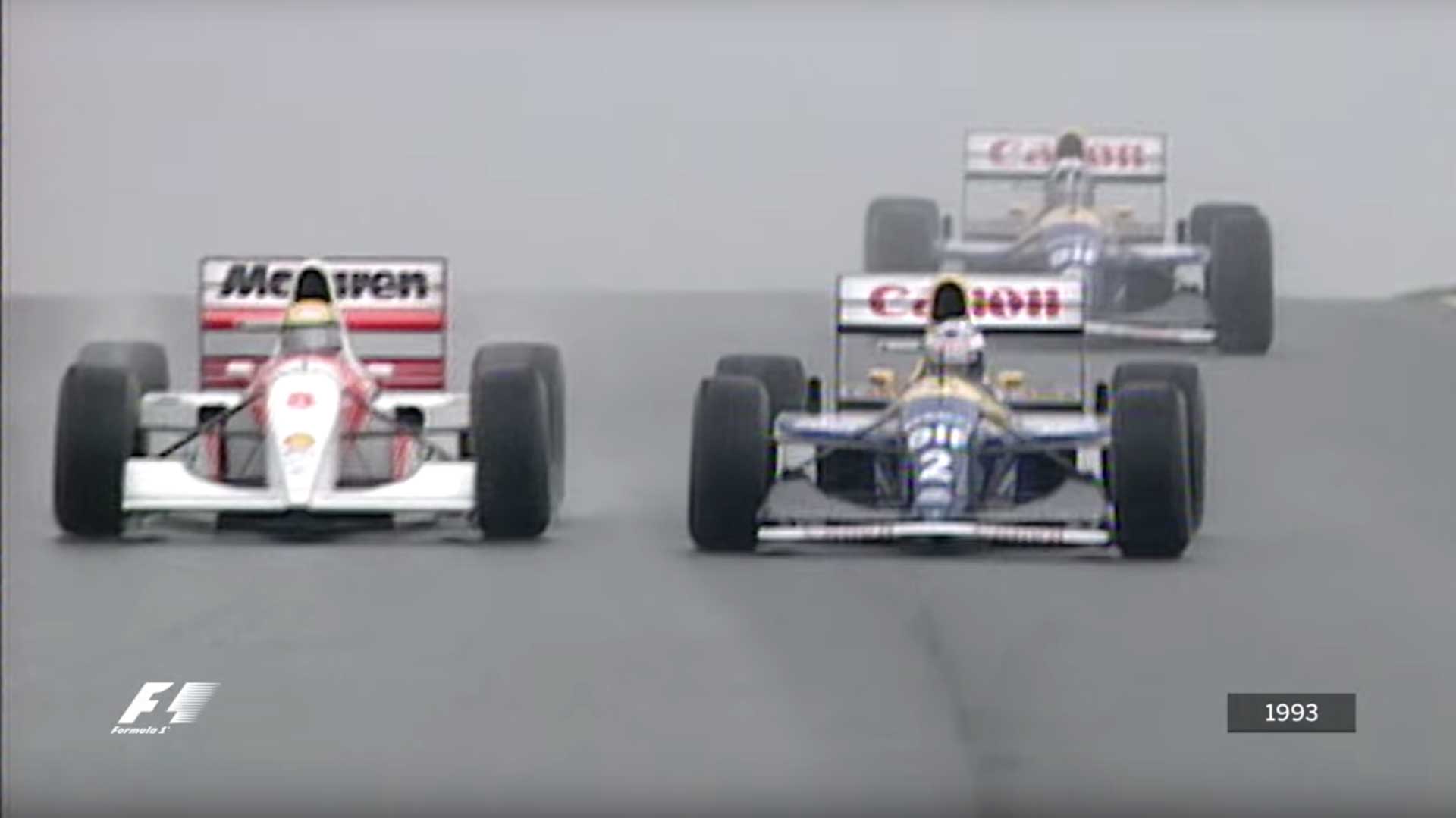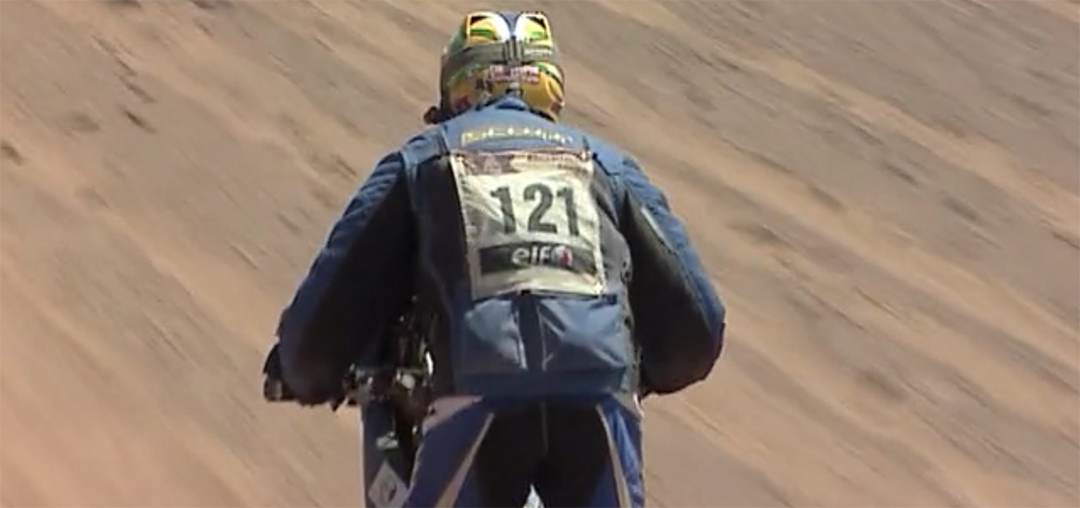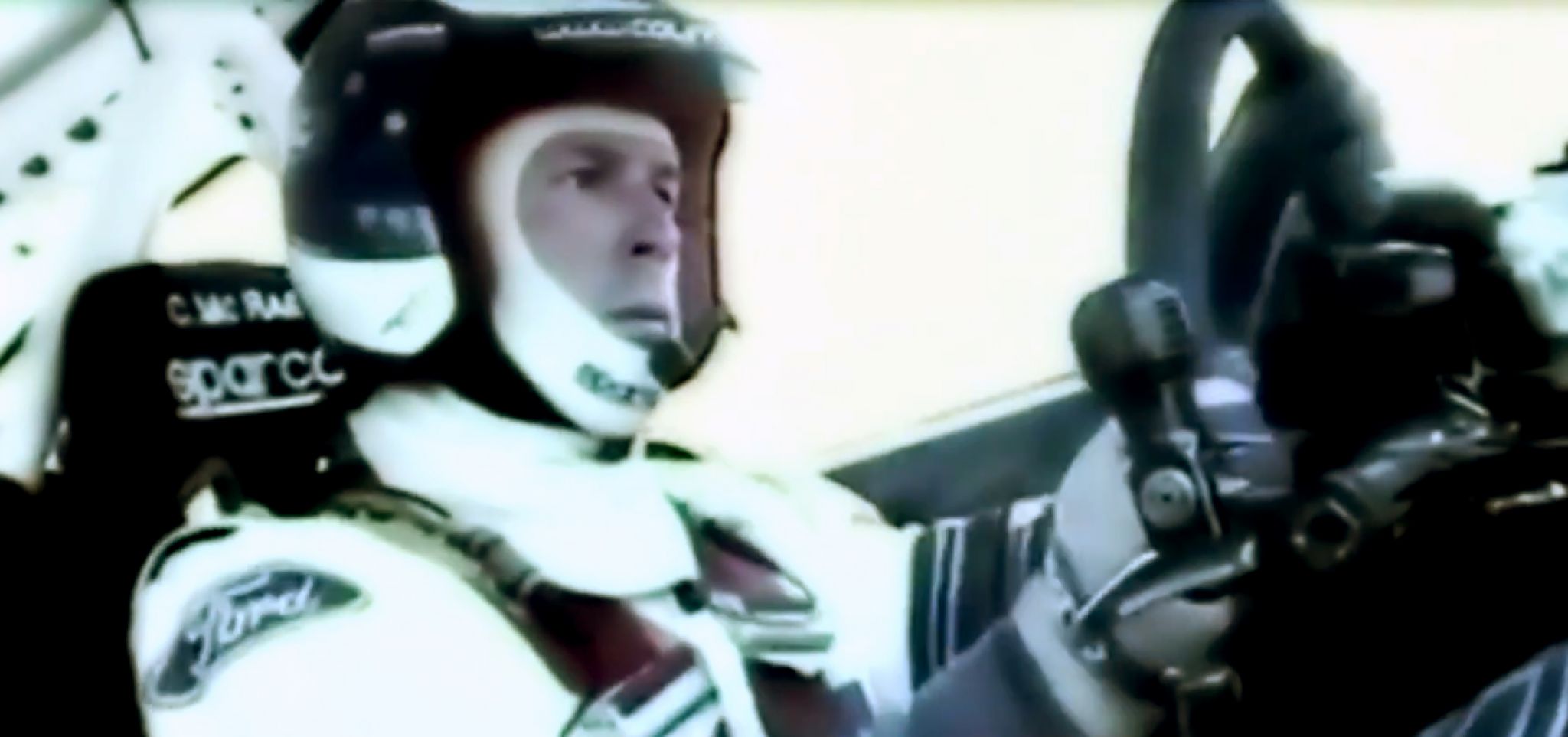This movie is going to be huge. I was a huge fan! Always loved his risk management ability. He was the greatest! GT
Formula 1 fans were apprehensive a few years ago when plans for a biopic about World Champion Ayrton Senna was announced – it’s been a long time since the last great racing film, and visions of Stallone’s Driven danced in our heads. Senna Director Asif Kapadia and screenwriter and executive producer Manish Pandey took a different direction, however, and spent years negotiating with the F1 bureaucracy and Ayrton Senna’s family, ultimately securing the rights to essentially all the archival footage available, more than 15,000 hours of film, which they then spent further years combing through and editing.
We’d heard that the result, released elsewhere in the world last fall and in a few U.S. art houses, was good, but the filmmakers had no plans for wider U.S. distribution: “We were told that no one in the U.S. knew who Ayrton Senna was, that there was no interest in Formula One, that we should forget about releasing the film here,” said Kapadia (if you’re among those who don’t know/don’t care, watch this, then get back to me), but they brought the film to the Sundance festival in January. There, it took the festival by surprise, winning the Audience Award and amazing critics including L.A. Times’ influential Kenneth Turan, who wrote that “Sometimes a documentary will unexpectedly reach out and grab you by the throat, not giving you a second to breathe.”
After that reception, Kapadia quickly arranged to bring the film to last week’s South by Southwest festival in Austin, a natural choice given the ongoing construction of an F1 track outside town for the 2012 Grand Prix season. The film was received even better there, selling out faster than any other film in SXSW history. That sealed the deal for Kapadia, and he announced he would seek a June release for the film in the United States.
The international trailer for Asif Kapadia’s documentary about Ayrton Senna.
The Making of Senna – The Lost Scenes
One of the biggest challenges in creating the Senna film, according to its producers, was deciding what footage to use and what to cut.
This was a theme Senna film writer Manish Pandey returned to several times when I interviewed him.
Some footage of Senna at his best, such as his virtuoso drive at Donington Park in 1993, is not used.
Two key moments in the budding Senna-Prost rivalry at Estoril in 1988 and Imola in 1989, where Senna was criticised for his driving, are also missing.
As I wrote in F1 Fanatic’s review of Senna in December: “Perhaps these weren’t thought significant enough to include, but putting them in might have helped to balance the film’s view of Senna, which verges on the saintly at times”.
I put that view to Pandey who said the criticism was “well taken” and offered an explanation for why the scenes weren’t included.
Estoril 1988
Alain Prost won the 1988 Portugal Grand Prix but after a frightening encounter when Senna squeezed him towards the pit wall as the pair blasted, flat-out, down the pit straight.

Pandey said the main reason this was skipped in the film was because they thought the footage lacked impact:
“We watched Estoril ’88 for bloody hours and it just looked so bad on a big screen.
“Not just the quality, but the exciting bit is a guy pulling a pit board away – that’s the only time you realise there’s a squeeze going on. It’s not like the Barrichello-Schumacher squeeze [at the Hungaroring last year] because Prost is behind him at the squeeze when it happens.
“Actually, when you see it on a big screen and you see what’s happening, the guy pulling his pit board away is about 100 metres behind Prost when he does it – he’s reacted late.
“It looks fantastic when you’ve got a commentator on a small screen telling you what’s happened and you don’t have a chance to see it. But you can’t pull that off in a cinema – people will just be going, ‘what did he do there?’”.
Pandey also said a desire to ensure both sides of the story were told mitigated against including the sequence:
“This was the year Senna famously clammed up – we just couldn’t get the counter-argument in. So it would be basically Prost’s point of view and no counter-argument.”
Imola 1989
The agreement between Prost and Senna not to try to pass each other in the first corner at the San Marino Grand Prix has been the subject of much discussion. Prost claimed Senna broke the agreement after passing him at Tosa when the race was restarted following a red flag.
Pandey says a desire to present both sides of the story also played a part in the omission of Imola ’89:
“There’s a fantastic interlude that’s on the FOM Duke review tape for that year, with Alain at Monaco talking about the broken agreement. All his point of view, lots of smiling.
“The problem was that Senna didn’t speak about it. We could have done it, as long as we’d had a counter-argument from Senna. He spoke about it in AutoHebdo to Pierre [van Vliet] but the tape didn’t exist.
“So what could we do? We’d made a decision that we were not going to get actors to read out because then it’s not real.
“We desperately tried to find that tape to make Imola ’89 work. We even found footage of the two of them talking to each other after the Berger accident on the new grid. We tried using voiceover there but it just didn’t work.”
Pandey felt the nature of the agreement was difficult to convey with the footage available. Added to that was the challenge of explaining to non-F1 literate viewers that the two bends before Tosa were not considered corners:
“The problem then is the camera angle is just crap. You see Prost getting away with Senna behind him, then you see Senna pulling out.
“Because it’s not a conventional track and you don’t have a straight followed by a corner. You’ve got this huge great run, a long left into Tamburello, the right before Tosa, then you have the braking point at Tosa – you actually have three corners.
“The agreement was not to overtake under braking for the first corner.”
Pandey admits he would have liked to have covered more of the Senna-Prost rivalry in the interest of balance:
“In a way I feel we should have had a crack at it anyway, even if it was weak, because perhaps what would have happened people would have thought ‘well, I didn’t quite understand that, but I understand something happened’.
“The slight problem we have now is that we do have Ron Dennis saying, ‘er, it was a tough year, the next year’.
“But I agree, as a fan I remember sitting there and thinking OK, I understand all the technical reasons we have for not doing this but I do feel that it’s such a big rivalry, it’s going to carry on until the end of the film – until Prost literally crosses himself [at Senna’s funeral], the rivalry hasn’t ended”.
Donington Park 1993
The reason for leaving out footage from Senna’s lauded drive in the 1993 European Grand Prix is simply that the footage didn’t look very good, according to director Asif Kapadia:
“It is amazing when you look at his driving how he wins in such an inferior car. But it is grey, it is pissing down with rain and no one is there.
“The camera work is awful too, even though they are driving at 190mph, it all looks so slow, so I chose not to make it a key sequence in the film.”
Familiarity also worked against some sequences as Eric Fellner, another of the film’s producers, explained: “With the race races that have been televised, what we tried to do was find angles.
“It sounds a bit nerdy, but we always tried to find the angle that hadn’t been broadcast.”
Five hours to 100 minutes
The team previewed thousands of hours of footage in Bernie Ecclestone’s video archive before creating a rough, five hour long cut of the film.
Pandey explains: “We got it from five hours to three, and that came down to two-and-a-half quite easily. But now it gets nasty.
“We knew we had to get down to 100 minutes because that’s really what it would sustain. And, my God, it was so hard.”
No doubt many F1 Fanatic readers would quite happily watch five hours of rare archive footage from the eighties and nineties. But there were reasons to cut the film other than the limited amount of footage they could obtain from Ecclestone:
“The problem is it becomes an issue of pacing. People have a feeling of expectation, if you set things up properly, that you’ve got to fulfil in a reasonable amount of time.
“And the nightmare is you want to get a little bit more in and you don’t know why but everyone’s a little bit exhausted, a bit lethargic.
“We had to fight for the 100 – it was meant to be 90, like most documentaries. But every time we chopped it to 90 it was like there was something missing. And when it got to 100 it just left you wanting that little bit more.”
Japan
There are two differences in the Japanese version of the film including one extra scene, as Pandey explains:
“In Japan we had to make two modifications to the film. John Bisigniano, when he walks down the pit lane in 1990 going “can you tell me what exactly happened, Ayrton?” – we had Kaz Kawai doing that in the Japanese version.
“Right at the end we used to have two Japanese journalists standing in front of the camera, trying to tell you that Ayrton Senna is dead, and they keep cracking up before they can say it. One keeps passing the other one the microphone, the other one drops his head because he can’t say it.
“Then Kaz appears in the pit lane, leans over the barrier and reads a prepared statement, and then gives these guys time to gather their thoughts. And they say: “We have this awful news to tell you”, “I wish he hadn’t died in this way”. It’s heartbreaking.
“We would have gone with it, but we were told that there was an opinion that it could almost look comic if you weren’t Japanese. It’s not an opinion I share.
“But the one place where we knew there would be no ambiguity was in Japan. And if it helps the Japanese viewers to understand that bit even more, they should have it.”
‘What I would have changed’
Pandey has two clear ideas about how he would like to change the film. One of which is showing a little more of Senna’s questionable moves in his rivalry with Prost: “It’s such a big rivalry and I think we made a mistake by not finding one tiny bit of touchpaper to light.”
The second was to use Gerhard Berger in part of a sequence from 1990: “You see Senna on the beach, thinking about giving up Formula 1, and Ron Dennis says ‘I called him and persuaded him to come back and told him you can’t let the dark forces win’.
The next shot is a Steadicam shot of Ayrton walking around a Shell truck and John Bisigniano saying ‘in 1990 he came back stronger, he came back wiser, Alain Prost had gone out of the team to Ferrari‘.
“That should have been Gerhard’s voice, and he should have said, ‘in 1990 I came into the team, Prost went to Ferrari’ – exactly the same thing, and you see maybe a two-shot of them.
“Then on the podium in 1991 when they’re spraying champagne and Ayrton’s the champion, Gerhard should have been speaking to us then going: ‘he was triple-champion now, we had great times, we had our own jets, I used to put frogs in his hotel room’.
“If we’d just had that over the podium that would have given the film this thing that’s missing.”
Tamburello
One of the last cuts made to the film removed a sequence about Senna’s death. Producer James Gay-Rees said: “We have footage of Senna standing at the corner at Imola a month before he died, during testing, and he is saying, ‘Somebody is going to die at this corner this year.’”
Pandey explained: “In the original treatment it had this section at Imola about Tamburello, explaining that in ’87 [Nelson] Piquet had an accident and walked away, and in ’89 Berger had an accident, had minor burns, and walked away.
“In ’94 Senna was testing there and we had footage of him there, pointing to Tamburello. And we had this cut with Senna pointing out that he wasn’t completely happy and Gerhard talking about how they’d decided they should try to modify it but couldn’t because of the river.
“And that was a very poignant section. Of the things that we did, that worked and we just couldn’t get in, that was the thing that I miss the most.”
Condensing so much material into a one-and-three-quarter hour film was always going to leave them with difficult choices. “People are paying money to see this film”, says Pandey, “and I don’t think they have to see it three times to go, ‘oh, what a great film’, it’s got to pay off the first time you see it.
“Hopefully, overall, you come away thinking it’s a pretty damn good movie and you’ve got an idea of who he was, not just as a racing driver, but who he was in the scheme of things in Formula 1.”
Senna opens in the UK on June 3rd. See the official website for more information and the official Facebook page for a list of cinemas that are showing it.




